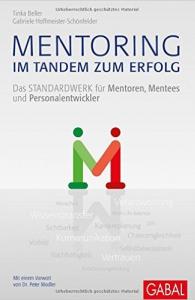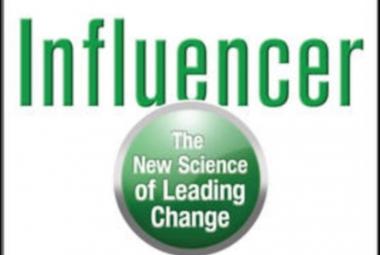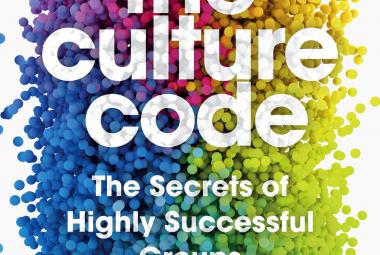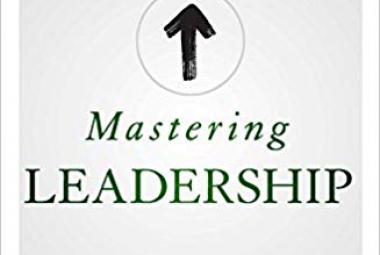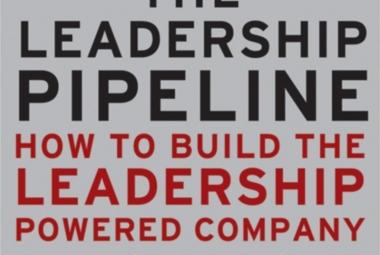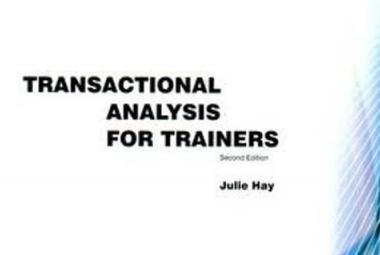In their (German) book Mentoring – im Tandem zum Erfolg, Tinka beller and Gabriele Hoffmeister-Schönfelder describe the power of mentoring. Mentoring is a powerful tool to use in an organization and therefore gains more and more attention. However, what makes a mentoring program to a success? And when should you use a mentoring program?
This article describes what mentoring is and how mentors and mentees should be selected and paired up. Then, I zoom in on one specific topic in which mentoring can be valuable: the so called generation mentoring.
Let´s start by clarifying WHAT MENTORING IS. The authors define mentoring as ´bringing two people with different (working) experience together, so they can learn from each other´. In other words; mentoring is a tool for transferring (implicit, undocumented) knowledge between two people. This is different from a training program in which certain skills or competencies are taught, or a coaching program, where an individual is supported by a coach in solving his or her own problem.
The first step in designing a mentoring program, is defining the goal of the mentoring program. What is it that the organization wants to achieve with mentoring? Examples are to actively educate the next generation of leaders in the organization, improving the communication between departments or the acceleration of a target group in the organization (for instance women).
Finally, on a more personal level the goal of the mentoring is a combination of the following four factors: improve visibility of the mentee, strategic personal development, knowledge transfer and career planning.
When the goals of the mentoring program are clear and set, the next challenge is to PAIR UP MENTEES WITH A MENTOR. Since most of the knowledge transfer within mentoring is done in one-to-one communication, it is important that the pairs are carefully selected. For both sides, mentor and mentee, the following prerequisites are important.
The mentees should be people who are willing to work on their own development. This means they are willing to bring topics to the table and are open for feedback from their mentor. The mentees are the ones that plan the meetings with the mentor.
The mentors should take their roles voluntarily and see the mentees as competent and individual personalities, from which they can learn as well. This means the mentors are self-critical and can both reflect on their own behavior as well as encouraging their mentees to do so.
One good way to select mentors and mentees and pair them up is by questionnaires. This way, both party get to think about the program and their possible role in it before the mentoring starts. Mentors can write down if they have had a mentor in the past and how that has helped them in their career, and in what kind of topic they see themselves as mentors. Mentees can reflect on the topics that they would like to receive help from a possible mentor.
The authors describe a couple of different types of mentoring program, but in this article I will focus on GENERATION-MENTORING only. Since I am working on a production site where the average age is 45+, I recognize the possible problems that the authors describe.
How can we keep informal knowledge within the organization when a large group of elderly leave the company? How can we change the jobs for the elder generation to help them keep their job challenging? And how can we keep dialog going in a world where 4 generations work together, each with their own preferences and worldviews?
A mentoring program which brings the older and younger generations in dialogue could help with all the above topics.
To understand possible difficulties between different generations in an organization, let us take a look at how the different generations see THE ROLE OF WORK IN THEIR LIVES:
The traditionalists were born between 1922 and 1945, grew up in an era where work comes before pleasure.
The baby-boomers, born after the war between 1945 and 1964 were brought up to type of living in which one lives to work.
Generation X came after that, with people born between1965 and 1979, who´s motto can be described as work to live.
Generation Y´, from 1980 to 1995, completely change priorities in their worldview, their motto would be: first life, then work.
The up and coming generation Z, born in 1996 and later are slowly entering the organizations with an even extremer motto: You only live once.
A second differences that can be found between the different generations are the way we handle our family situation, in which the man used to be the only one working in the past generations, up to the newer generations where both parents have a career next to raising their children.
A third is the role of technology and very current: social media, in our lives.
PAIRING PEOPLE FROM DIFFERENT generations can create a win-win learning environment for both generations. The younger generation can benefit from the experience and the implicit knowledge the elder generation has gathered over the years, while the older generation can learn about new trends in products and social media and how they see the world. This not only improves the way in which knowledge is kept within the organization, but improves the common understanding of the way people think about life and work, which improves the organizational culture.
Mentoring – im Tandem zum Erfolg is a great introduction to mentoring and how to set up a mentoring program. Next to generation mentoring, the authors dedicate chapters to a program for helping women breaking through the glass ceiling, how future fathers can handle their work life balance and how potentials can improve their visibility in the organization.
This book helps you reflect on your role as a mentee, mentor or Human Resource manager and I can therefore recommend this book to everyone who has one of these roles in his or her current job.
Continue to:
Talk Like TED - C.Gallo (summary)
REFERENCE:
Beller, T., & Hoofmeister-Schönfelder, G. (2016). Mentoring - Im Tandem zum Erfolg. Offenbach: Gabal. (order this book)


